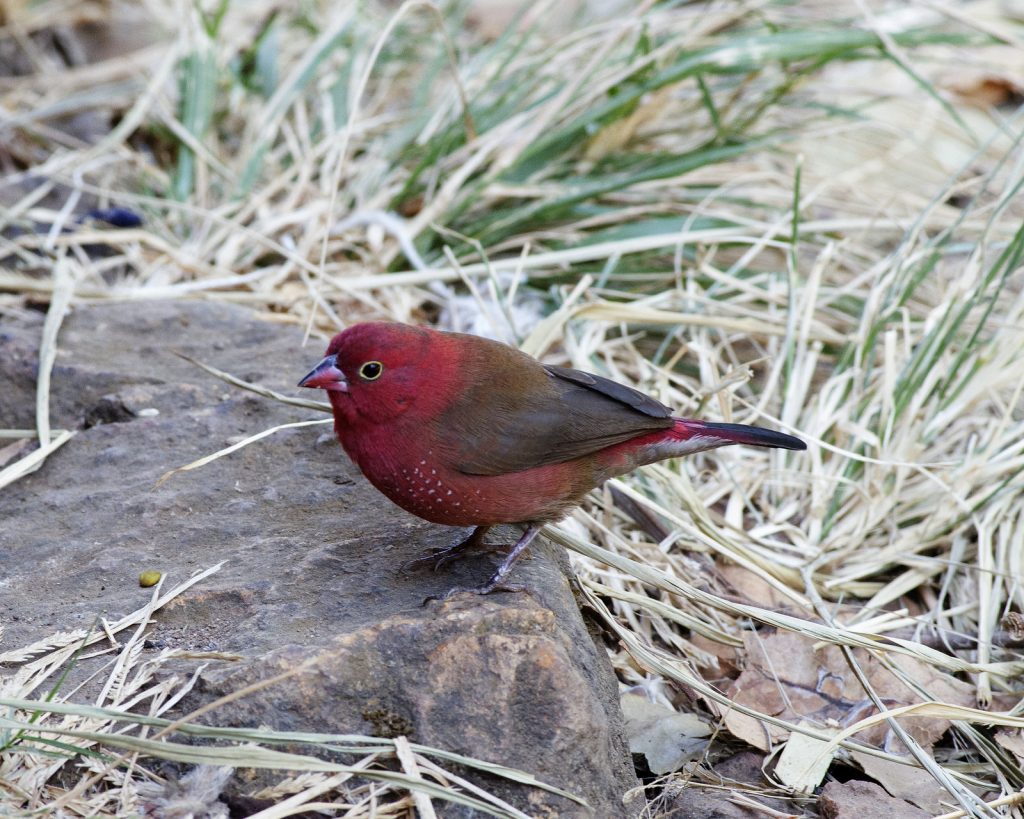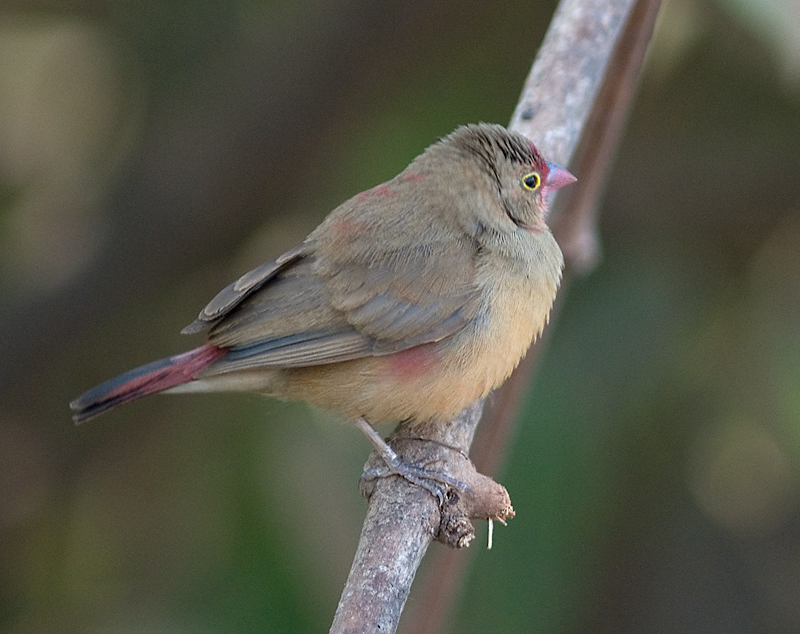The African Firefinch; known also as the blue-billed firefinch or colloquially as the “ruddy,” is a species of estrildid finch found throughout Africa. The species is quite common in aviculture in Australia and throughout the world. They are active and hardy birds that get along well with other placid finch species, making them popular in mixed finch collections.

Housing & Compatibility
African Firefinches can be housed successfully as single pairs, a colony, or as part of a mixed collection. They prefer a large planted aviary, but are generally tolerant of smaller aviaries or even a large flight cage.
African Firefinches are a placid species and can usually be housed with most other placid finches. They are among the smaller finch species available, so it’s likely any aggression would be directed towards them rather than caused by them.
African Firefinches spend a lot of time on the ground, especially if there are low-growing grasses and shrubs. The aviary substrate should be kept clean and dry.
Diet & Feeding
A quality seed mix including canary seed, various millets and panicum forms the basis of the African Firefinches diet. Seed lacks many essential vitamins and minerals which must be compensated for by introducing other foods. Sprouted seed increases the nutritional value of seed and is a cheap way to improve your birds health. Freshly grown green seed heads should also be offered frequently.
The African Firefinch doesn’t have as strong a requirement for leafy green as other finch species, however they should still be provided throughout the year. Kale, bok choy, endive and silverbeet are the most nutritious and will be readily eaten. Spinach can also be given, but only sparingly as it can contribute to calcium deficiency.
Live food is an important component of the African Firefinches diet and should be provided throughout the year – especially during the breeding season. Mealworms, maggots, termites, and small crickets will be consumed readily. Commercial soft finch food mixes can also be provided for an added nutrient boost, particularly when breeding.
Do not feed anything from the list of forbidden foods.

Breeding
African Firefinches breed best in spring and autumn, with a hen bird that is at least 12 months of age. These birds demand privacy to breed successfully and will not tolerate nest inspections.
A wide variety of artificial nests will be accepted, though they have a preference for a dense shrub just above ground level. They will construct a dome-shaped nest from fine strands of dry grass.
They typically lay 3-6 eggs in each clutch, which are incubated by both parents for approximately 13 days. Young birds fledge the nest at three weeks of age and are usually independent a month later.
Spare birds should not be housed in the same aviary as breeding pairs.
Sexing
Female birds appear much duller than the males, appearing more yellow than red.
Health
The African Firefinches tendency to feed at ground level makes them unusually susceptible to worms and other infections and diseases. A strict worming and parasite control regime should be implemented to ensure their long-term health.
I have Senegal fire finch species since 2019 they first breed in open aviary and now i kept the pair in 3feet length 2feet depth and 2feet height they have breed in that cage also but always their chicks died no tossing even they don’t stop feeding but chicks are dieing now some how i manage to save 3 chicks but area near to vent is lumpy and hard if i touched what should i do